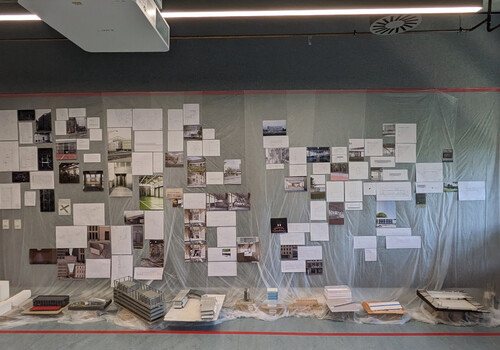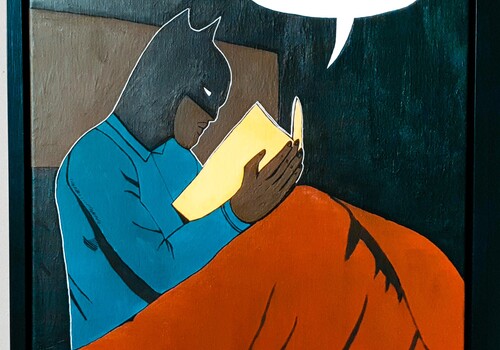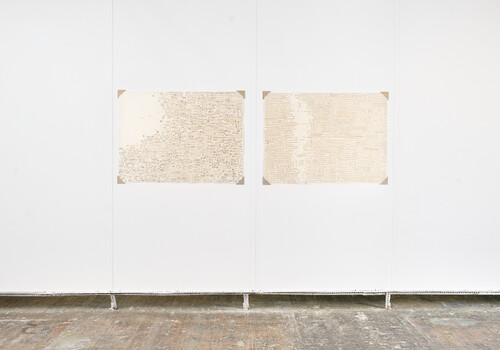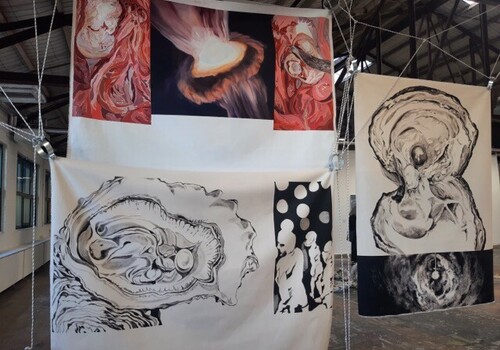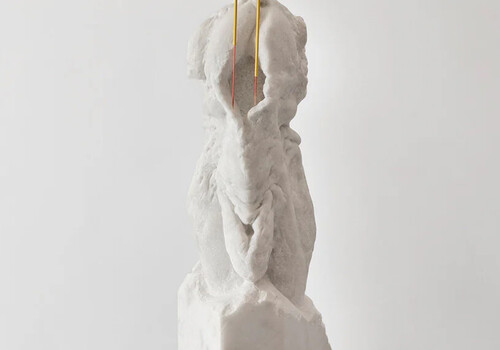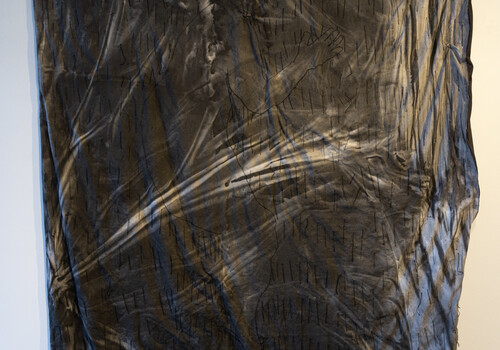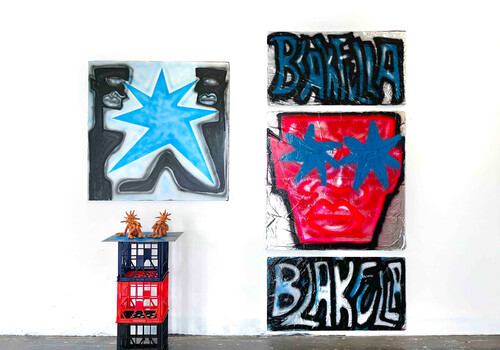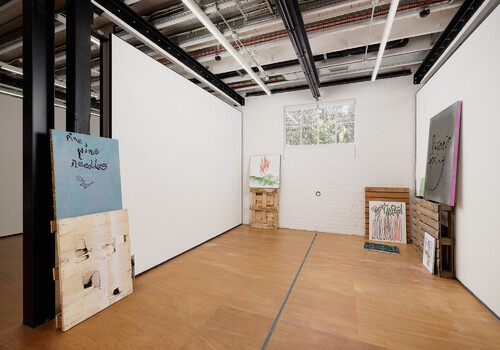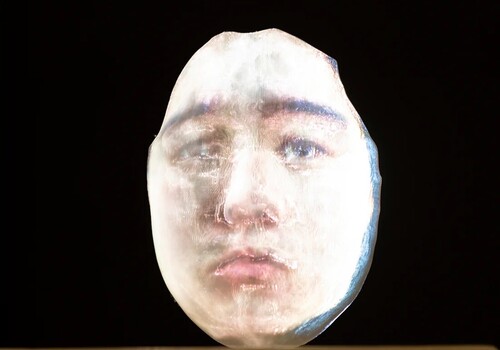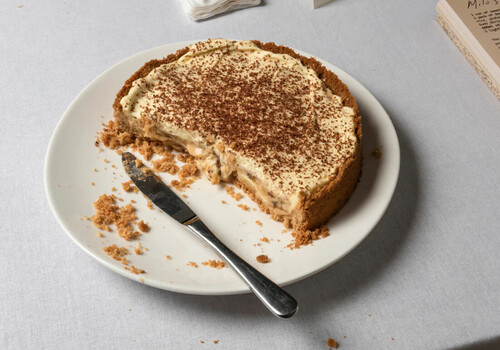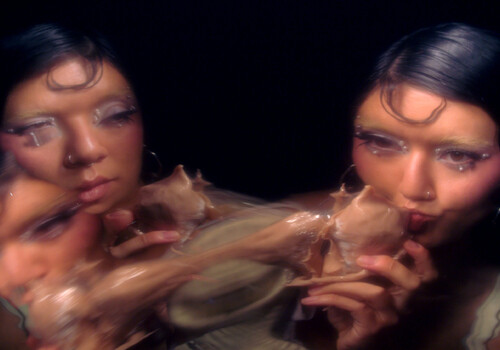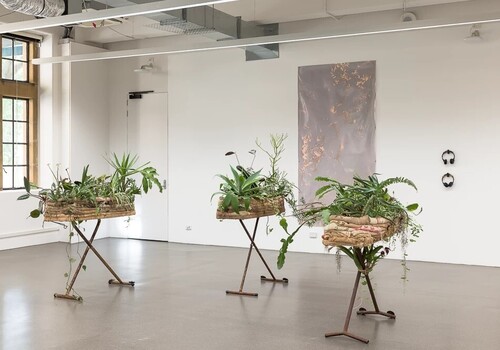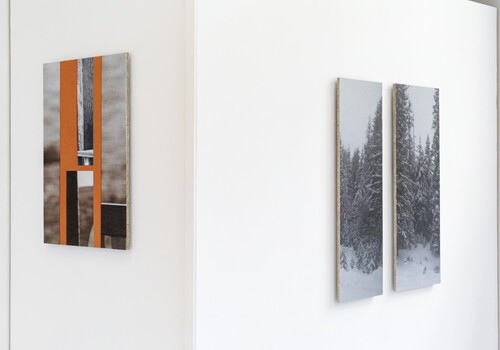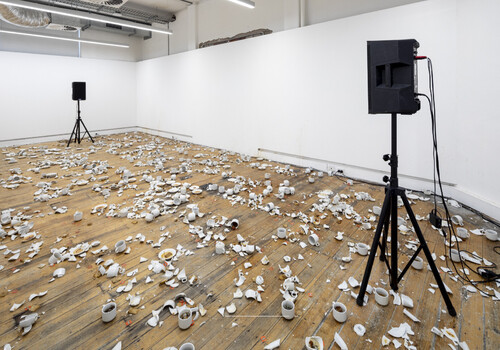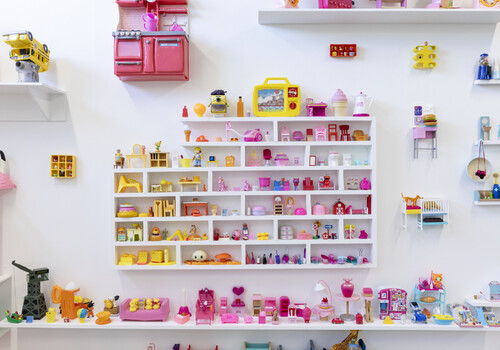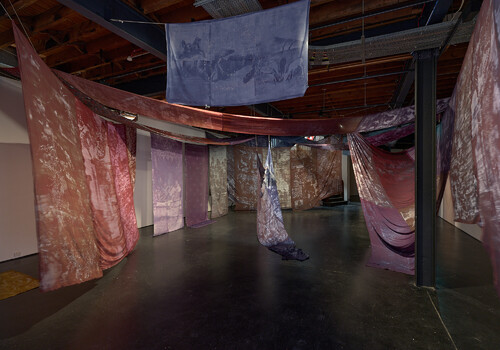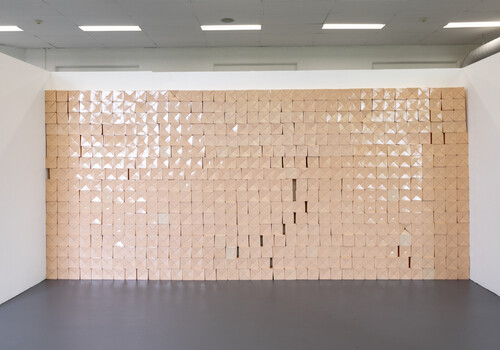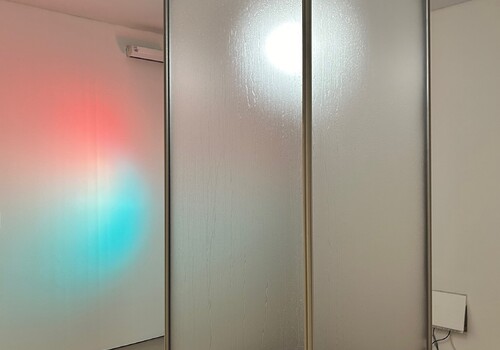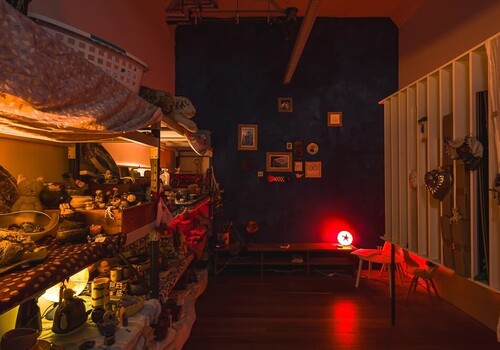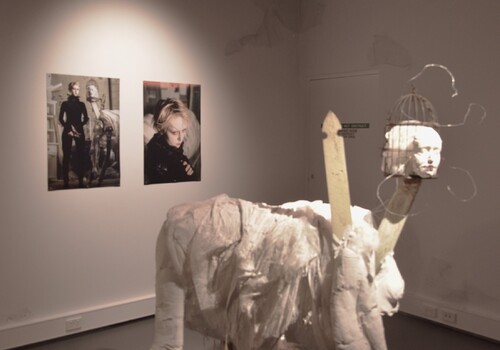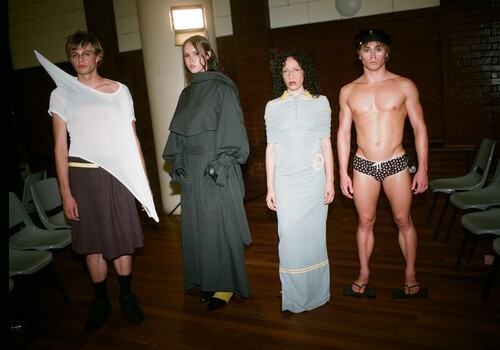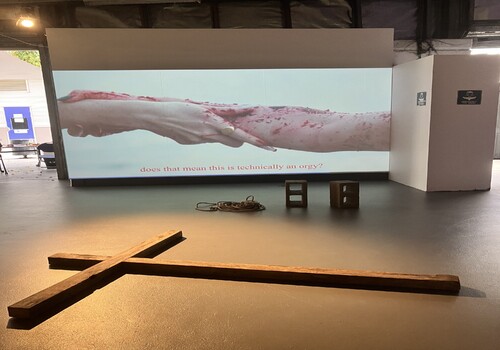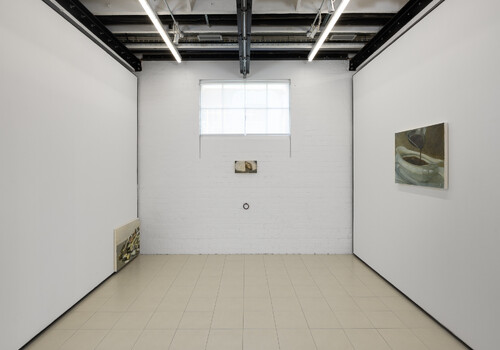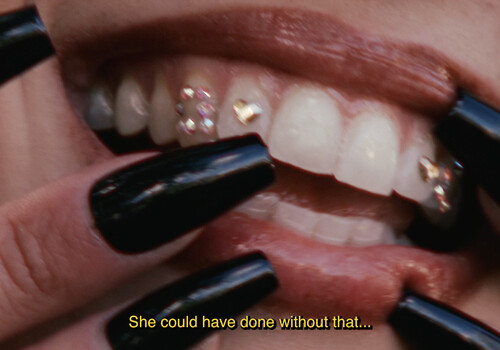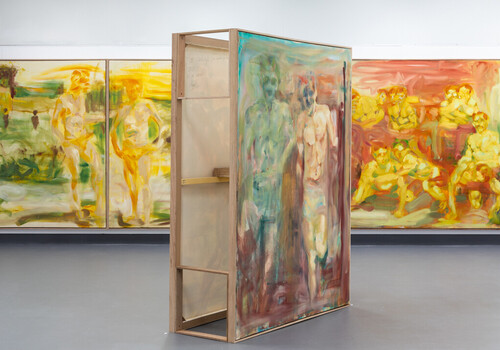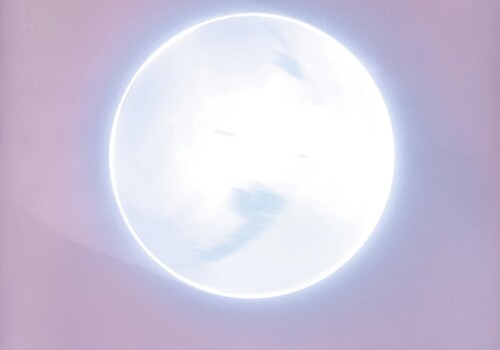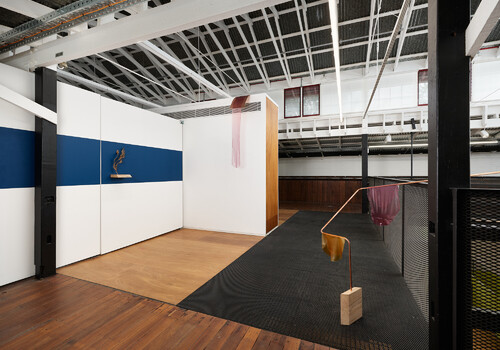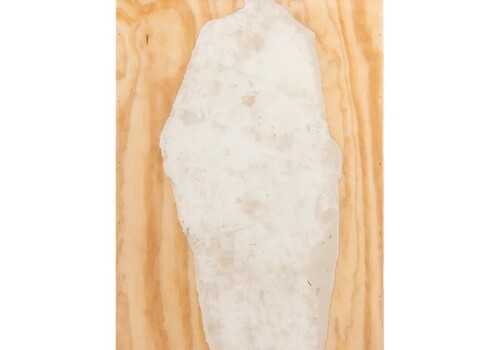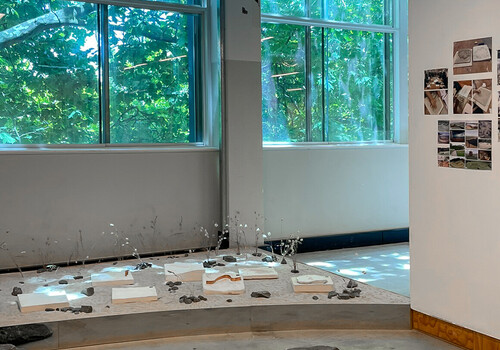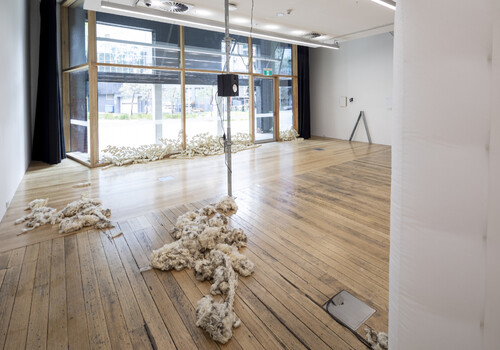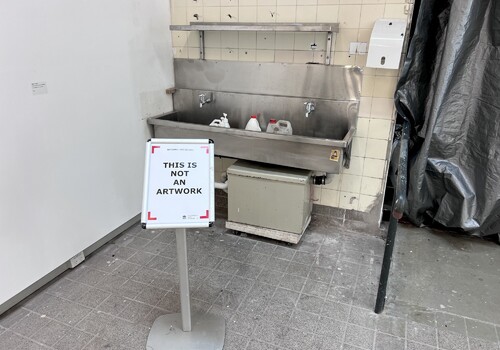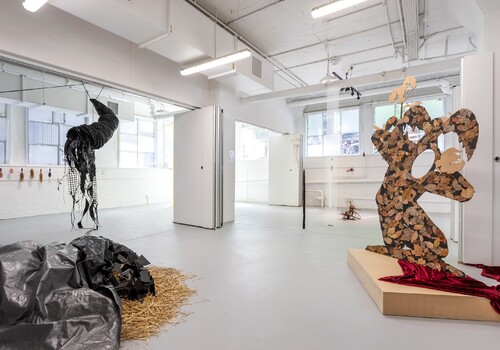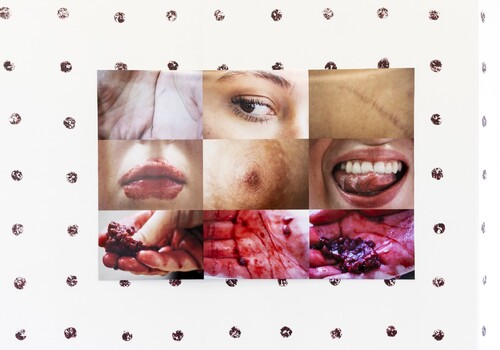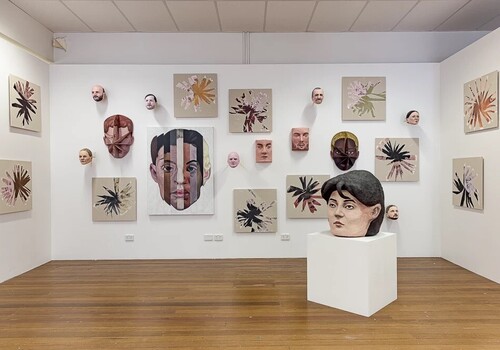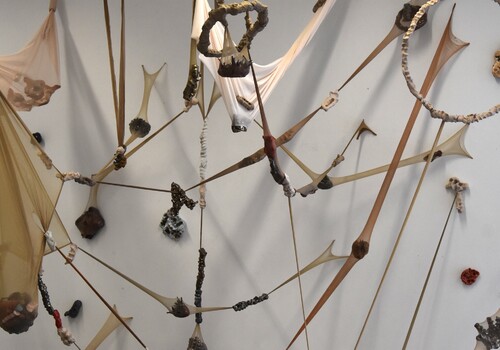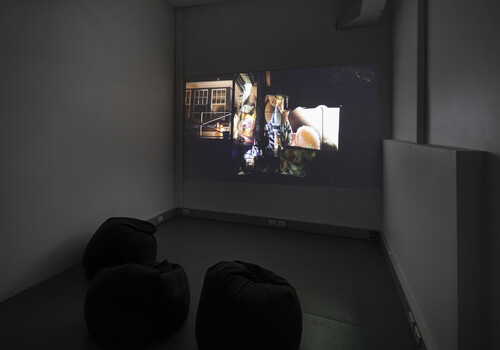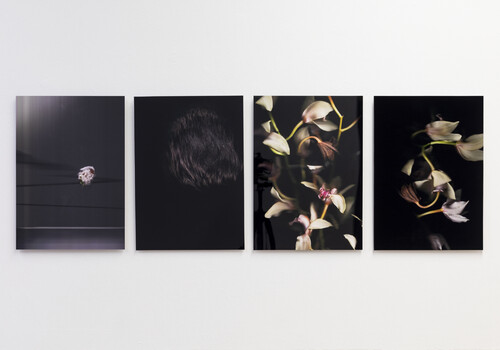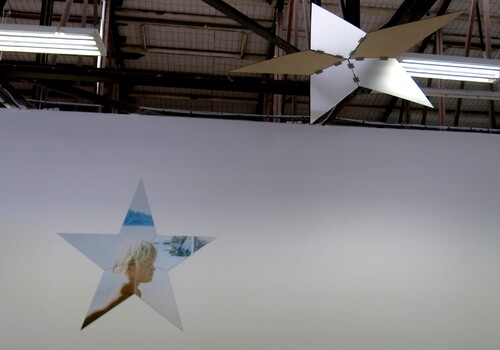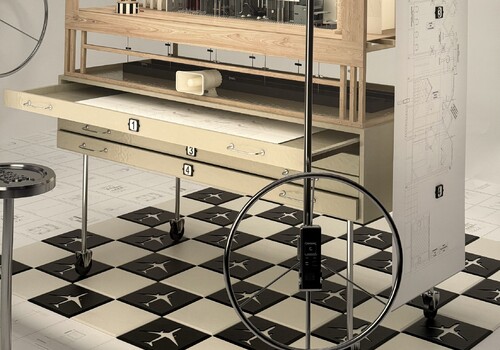Sculpture, Installation, Queensland College of Art
By Louise Truan
What have you left behind in your past? The sculptural works in this year’s Queensland College of Art and Design graduate exhibition explore what remains, or the “Remainder,” in both tangible and nostalgic ways.
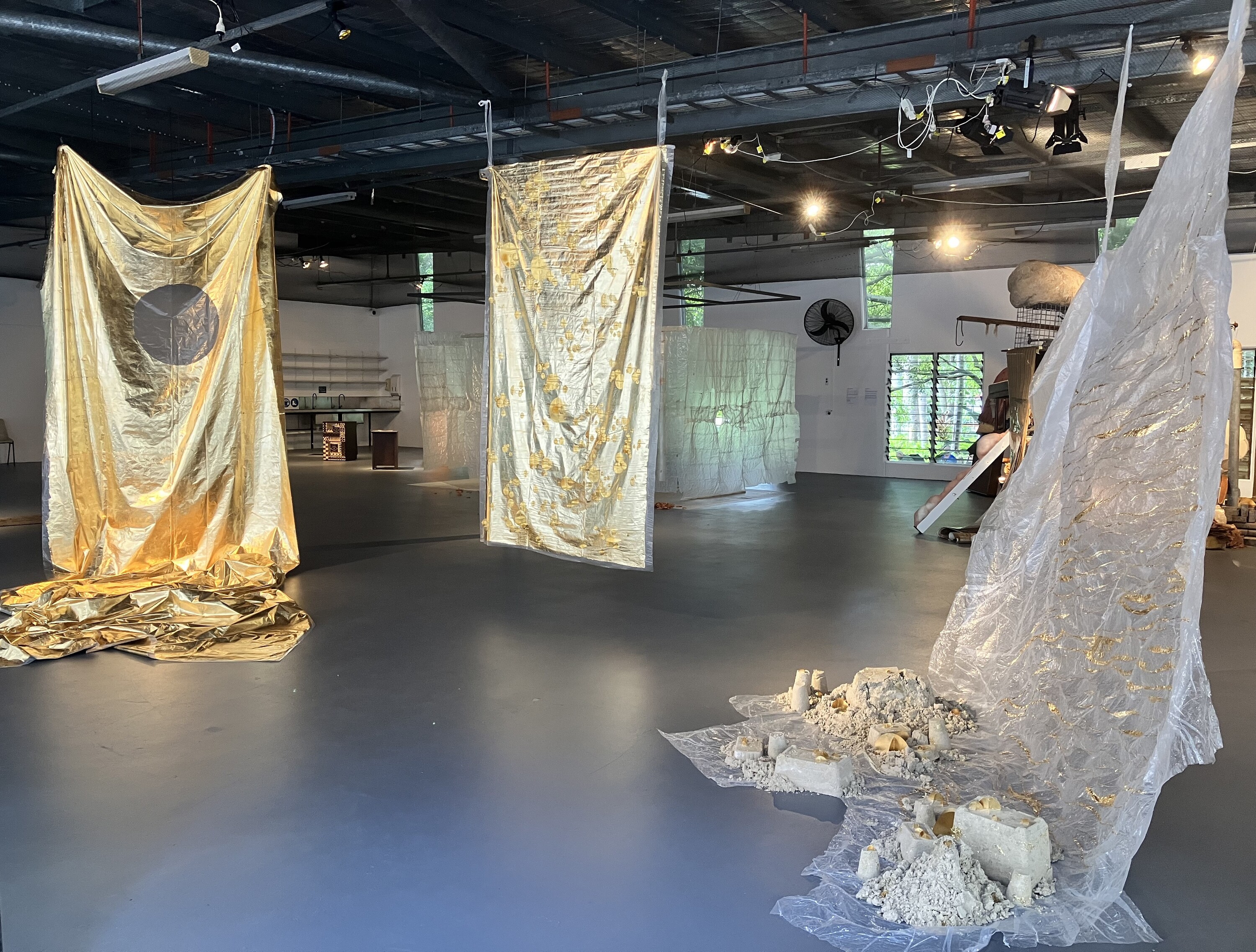
Deb Lansdown, Sunskin, 2024, gold foil, builder plastic, 5 x 2.5m, QCAD, Brisbane. Deb Lansdown, Sunskin Hues, 2024, gold foil, builder plastic, takeaway containers, 1.4 x 2.4 m, QCAD, Brisbane. Deb Lansdown, Shore, 2024, gold foil, builder plastic, sand, gold glitter & shards, 3 x 2m, QCAD, Brisbane. Photo: Louise Truan
Deb Lansdown’s Sunskin (2024) series is made up of three hanging gold-foiled plastics. In her artist talk, Lansdown shared that Sunskin (left) was prompted by asking herself: “What if the sun had skin?”, turning something intangible into something real. Sunskin Hues is positioned in the centre of the room, by an open wall for maximum effect, and creates a fluttering of golden light as you walk around it. Sunskin Shore, with its sand and glittering waves on plastic, evokes memories of trips to the Australian coast. The warmth of this series, along with its tactile and reflective materials, evokes memories of summers spent at the beach, waves crashing, collecting seashells from the sand, and embracing the sun.
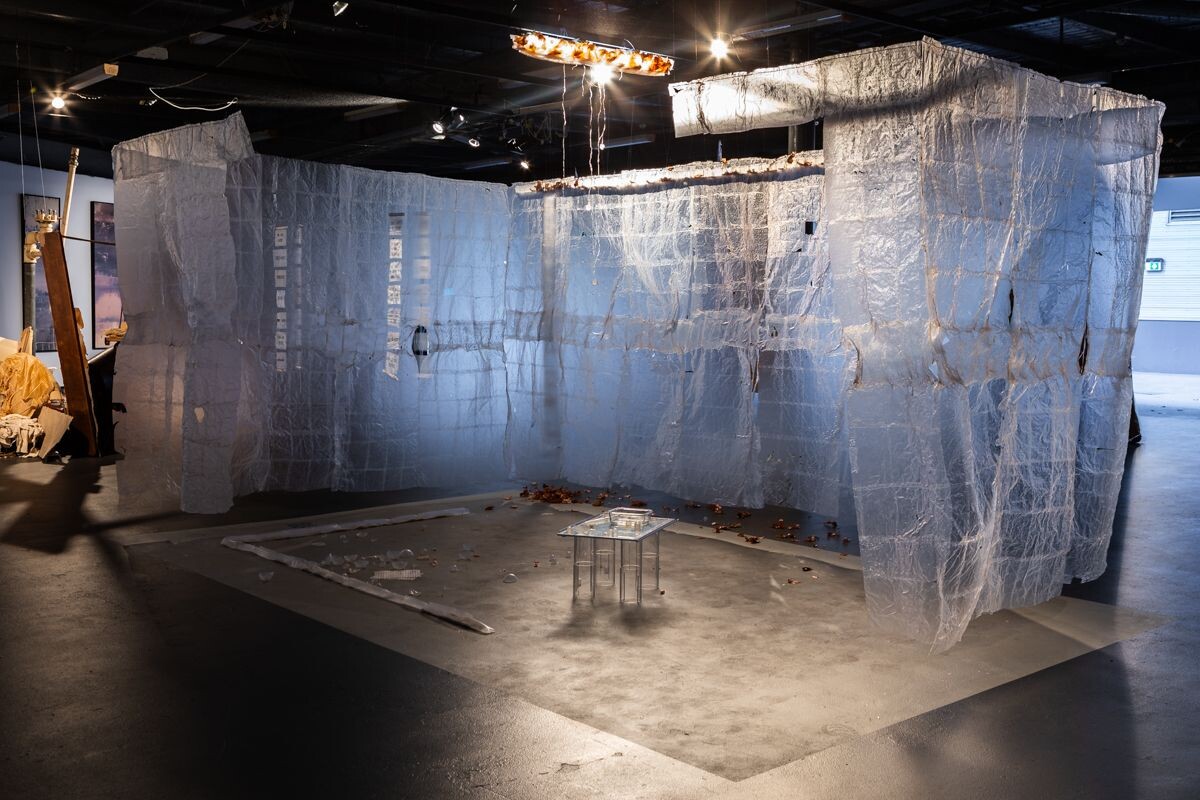
Rosemary Tamas-Cao, ee with ellow owers, 2024, Vietnamese rice paper, onion peels, cotton thread, fridge shelf, Perspex, no dimensions provided, QCAD, Brisbane. Photo: courtesy of Queensland College of Art and Design.
Rosemary Tamas-Cao’s installation ee with ellow owers (2024) is a room made of rice paper. There are rice grains and onion strips strewn on the ground, golden brown onion skin in a gutter overhead, a single fridge shelf on the ground, and Perspex containers in the cube-shaped room. Rice paper with hand-stitched poetry and rainfall data hang from the ceiling. ellow owers works on two levels: it is a personal story about the artists’ family living in temporary housing, sheltered from Meanjin’s stormy season. You can see this in the structure: data, poetry, and Tamas-Cao’s degradable materials (rice paper, onion, and rice) are each cultural mediums. On a broader scale, it is also a topical critique on housing and the challenge of climate change. By telling a personal story of temporary housing, chaotic weather, and enduring culture, Tamas-Cao has created a thoughtful installation that combines intimacy and ephemerality.
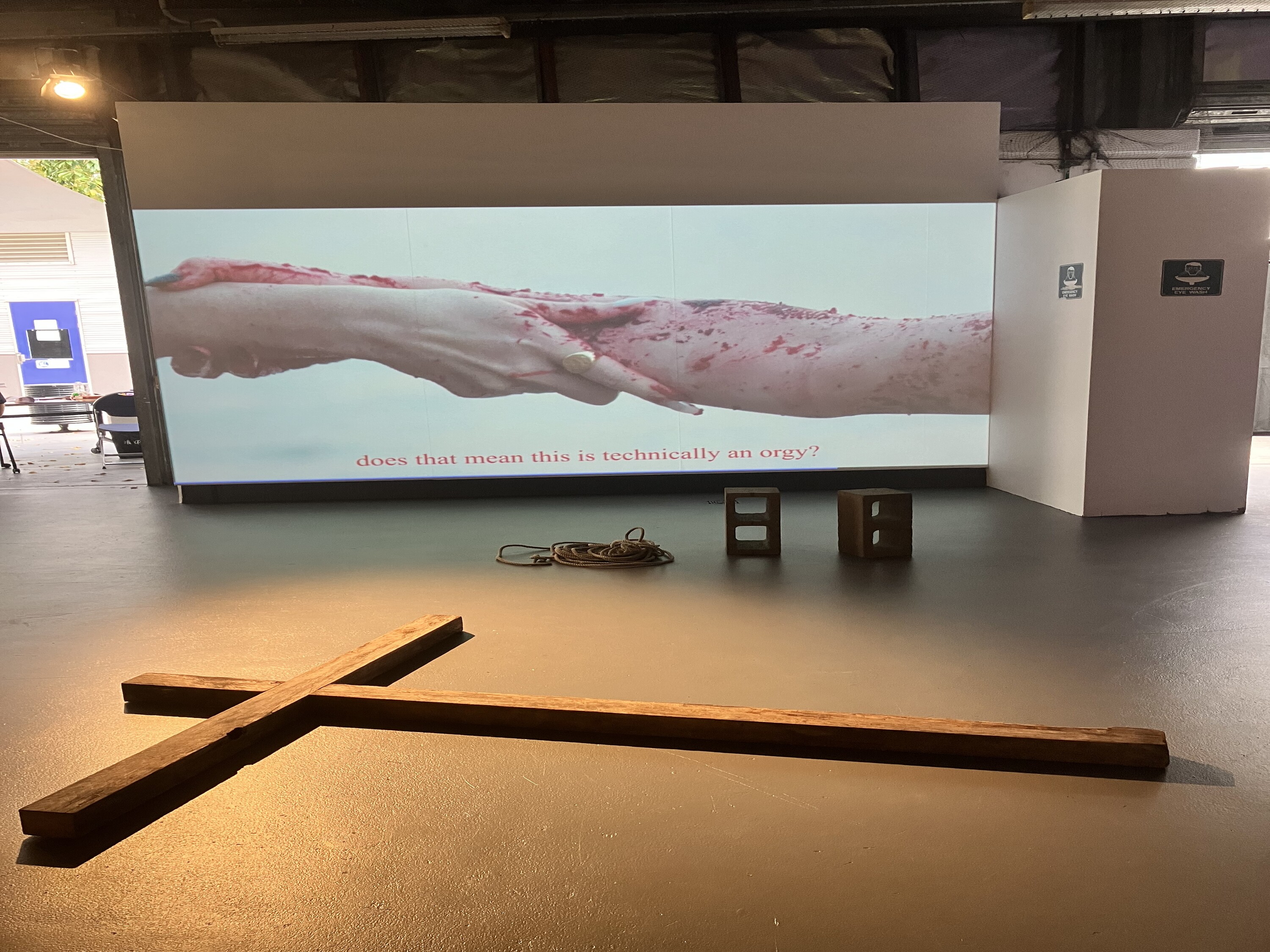
Fiarrah, God and Satan Were Lovers, 2024, short film 4:38 minutes, timber, concrete and rope, no dimensions provided, QCAD, Brisbane. Photo: Louise Truan
Fiarrah’s God and Satan Were Lovers is a short film that asks us to examine society’s capitalist values, and how they relate to religion and climate change. Set in a river, Lovers features a serious-looking God in a black bikini, and a mischievous, white horned Satan in short black leather pants and what looks like chunky red jam spread over their skin. Throughout the clip, God and Satan grope each other’s arms and exchange meaningful looks. Satan takes Jesus’s place by lying on the cross in the river, and Satan mugs it up for the camera, having a wickedly good time. On the floor of the gallery in front of the video lies a timber cross, concrete, and rope from the film. Fiarrah describes their artwork as “a navigation of the individual’s quest to find comfort while confronting various discomforts,” which I would say it achieved. The setting, outfits, and God and Satan’s kinky relationship make it all weirdly enthralling to watch.
Using the concept of a “remainder” as a theme, QCAD’s 2024 sculptural graduates explored the remainders of their both own histories, and society’s, in their artworks. These emerging artists have addressed what is left behind, physically, culturally and morally, by evoking memories of summers past, uncertain living arrangements, and raising questions about what values we are left with in our capitalist society.
Louise Truan is an arts worker and Art History (Honours) student at the University of Queensland. IG: @lou.travels.ig.
